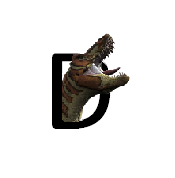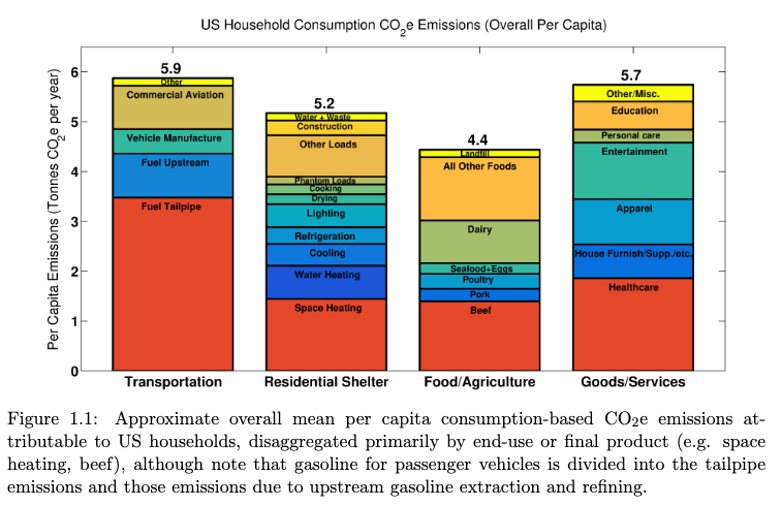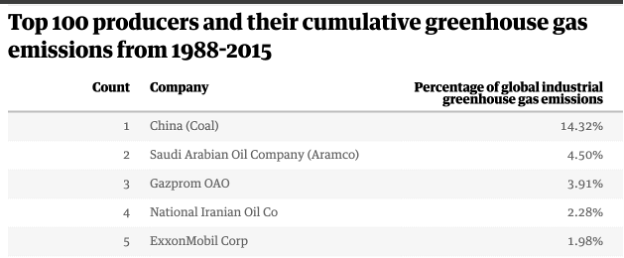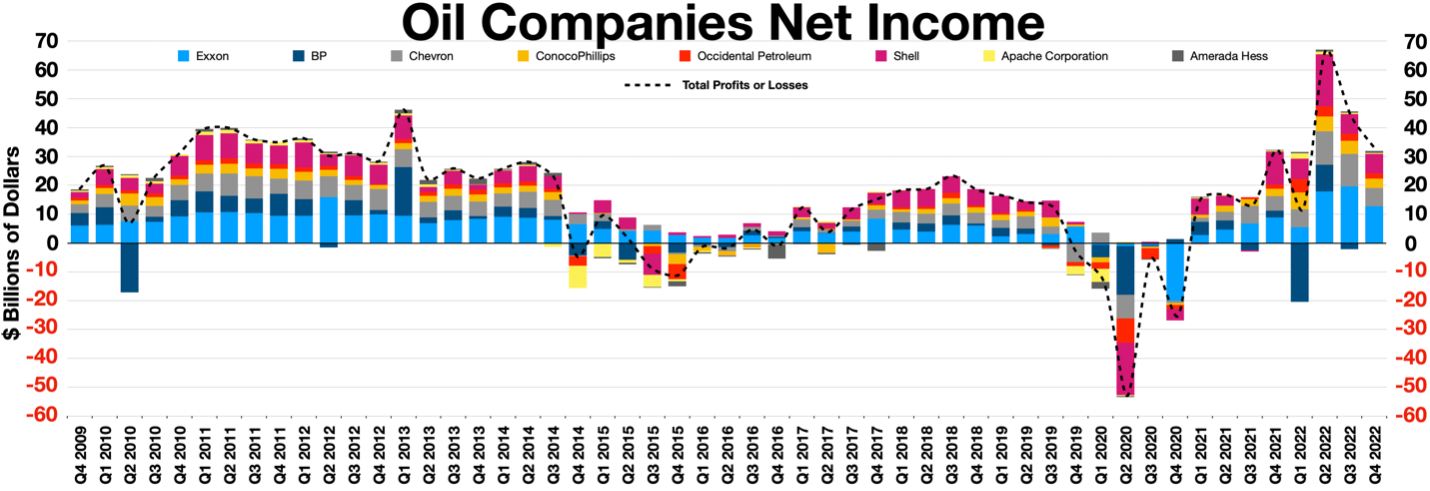![]()
Tyrannosaurus Rex (Tie-ran-o-saw-ruhs Rex)
King of the Tyrant Lizards
Tyrannosaurus Rex, also known as T-rex, was a species of dinosaur that lived from the late Jurassic period to the late Cretaceous period, 150-65 million years ago. It was part of the meat-eating family of dinosaurs, called therapods. They walked on two legs at an angle, using their tail to balance their weight. This means they would have been as long as 40 feet long and 12 feet tall when standing, weighing between 11,000 and 15,500 pounds when full-grown. To maintain its vast size, T-rex was a carnivore that preyed on many other dinosaurs of the time period, such as the Edmontosaurus, which is speculated to be its preferred prey because of a lack of protective features. It would have lived in northern North America, in the northern Rocky Mountains, and potentially other places such as modern-day Mongolia.
T-rex bites were strong, and they used them to fight other T-rexes, either to settle conflicts between them or perhaps as a form of cannibalism. Fossils from other dinosaurs have shown that T-rexes could bite through bones, and T-rex dung shows they often swallowed pieces of bones. The serrated shape of a T-rex’s teeth may have not only increased the sharpness of their teeth but also allowed infectious bacteria to transfer to whatever animal they bit.
A large part of T-rexes’ brains were reserved for their sense of smell. This means they may have used their sense of smell to track down prey more efficiently. This could have taken the form of active hunting or scavenging, although it seems likely T-rexes did both, hunting when they had to and scavenging when a meal was readily available.
Although T-rexes’ arms were small, it’s possible they would have been extremely strong. They may have played a role in mating, slashing at assailants during close combat, or they may have been a largely vestigial structure (a structure that was useful earlier in evolutionary history but has become less useful) that grew smaller over time to not get in the way of their powerful bite. Tyrannosaurus Rex would’ve been at the top of the food chain from the late Jurassic to the very end of the time of the dinosaurs.
3D Model (best viewed in full screen)
Stegosaurus (Steh-guh-saw-ruhs)
Stegosaurus was a plant-eating dinosaur that lived in North America during the Late Jurassic period 152-145 million years ago. Stegosaurus is known for the large plates on its back as well as the giant spikes on its tail. The name “Stegosaurus” was coined by a man named Othniel Charles Marsh. When Marsh was describing the first Stegosaurus fossil, he said that the plates would have lain flat on the back of the dinosaur. Marsh later found a specimen engulfed in mud and noticed that the plates were held in place vertically on either side of its spine.
The purpose of the plates along its back is widely debated among the larger paleontologist community. One hypothesis is that they house blood vessels that are used to regulate the temperature of the animal. Another theory states that they are used to attract mates, similar to the modern-day plumage of some species of birds or the antlers of deer. Yet another idea is that the plates of a Stegosaurus are meant to give protection to its backbone and spinal cord. The spikes on the end of the Stegosaurus’s tail were used to defend themselves against the attacks of predators and rivals. Fossils of Allosaurus have been found with damage due to Stegosaurus tail attacks.
The Stegosaurus was a large dinosaur, 9 meters (29.5 feet) long, 4 meters (13 feet) tall, and weighing 5.5 tons (11,000 pounds). Stegosaurus’s skull was not large compared to the rest of its body, and its brain would have been around the size of a walnut. This means it may not have been intelligent compared to many modern-day animals. It lived in the subtropical forests of North America, traveling in herds. Fossils have been found in modern-day Colorado, Utah, and Wyoming. This environment had both dry and wet seasons, and stegosaurus would have typically lived by some source of water where it could consume leafy plants, an important part of its diet.
3D Model (best viewed in full screen)
Spinosaurus (Spy-no-saw-ruhs)
Spined Reptile
Spinosaurus was a large theropod dinosaur. The Spinosaurus was the largest meat-eating dinosaur and the largest terrestrial predator to ever exist. The name Spinosaurus means “spined reptile” which refers to a large sail on its back. Spinosaurus lived between 99 and 93.5 million years ago in the Late Cretaceous Period in North Africa. Spinosaurus fossils have been found in modern-day Egypt, Tunisia, Niger, Algeria, and Morocco. They were 59 feet long, 20,000 kilograms, and had a skull six feet long. The sail of the Spinosaurus was 5 feet tall.
Spinosaurus most likely spent a lot of time in water. Its compact and dense skeleton allowed for high control over buoyancy, although it is debated whether or not it could fully swim. Recent studies have suggested that the Spinosaurus may not have been well suited for swimming due to its instability in water and would have preferred wading or hunting on the shore. The Spinosaurus’s diet likely consisted of fish because of the shape of its long snout and straight teeth, although it could have also eaten other dinosaurs as well. The narrow jaw of the Spinosaurus would have been very effective at trapping fish and the undigested scales of fish have been found in similar dinosaurs.
The purpose of the iconic sail on the back of the Spinosaurus is still unknown to scientists, but there are several possibilities. Some speculate that it was used for social signaling, species recognition, or a mating display. Others say that the sail is used to regulate body temperature. Some people think that Spinosaurus’s sail would have been part of a fleshy hump used to store water and fat, but the most recent data suggest that it was in fact a thin sail.
3D Model (best viewed in full screen)
Triceratops (Try-seh-ruh-tops)
Triceratops were a species of dinosaur that lived during the late Cretaceous period, 68-65 million years ago. This makes them one of the last non-avian dinosaurs to evolve before the asteroid that ended the Cretaceous period. They weighed 4-5 tons and could grow up to 30 feet long, larger than some school buses. The name Triceratops means “three-horned face”, and it is believed they may have used their three horns for many purposes, such as defense, mating, or displays of dominance within their herd. The main predator they had to defend themselves against would have likely been T-rex, since they shared the same habitat and were of a similar size. In addition to their large horns, they had a frill on the back of their head with around 20 small spines facing backward that were likely also used for protection against predators as well as identification within their species.
They are believed to have foraged in herds for protection, as they ate mostly plants. They foraged on mainly palm fronds using a specialized horned beak. However, triceratops may have lived alone for parts of their lives, as their fossils are often found alone. Due to the shape of the triceratops’ ears, we can tell they specialized in hearing lower noises, possibly because it made it easier to hear booming footsteps. it’s conjectured they may have made very low noises to communicate with each other while in herds, similar to modern-day elephants. Its fossils are often found in the United States, meaning they likely lived there in large numbers.
Because of their gargantuan size, prevalency in the time before the extinction of the non-avian dinosaurs, and how often they traveled in herds, triceratops are some of the most commonly found dinosaur fossils, even though they were around for such a short time. It’s possible that Triceratops were very colorful, due to the inlay of blood vessels around their skull that could have helped provide blood for keratin structures. Some triceratops skulls reached a length of nearly 10 feet, with horns over a meter long.
3D Model (best viewed in full screen)
Ceratosaurus (Sr-a-tow-saw-ruhs)
The Ceratosaurus was a large Theropod dinosaur that lived 153-148 million years ago in the Late Jurassic period in Africa, Europe, and North America. The most distinctive feature of the Ceratosaurus was a row of sharp horns on its head, a row of bony plates of armor (called osteoderms) running along its back, a large horn at the front of its head, and two horn-like structures over its eyes. The spines along the back of the Ceratosaurus likely served the purpose of protecting it from prey or the rival meat-eaters of the time such as Allosaurus or Torvosaurus.
The Ceratosaurus was among the largest predators of its time. It most likely feasted upon plant-eating dinosaurs, but some scientists say that it ate aquatic animals such as fish, turtles, and crocodiles. Ceratosaurus was renowned for its astoundingly long teeth, which were over 3.5 inches long. Scientists don’t know why the teeth were so long, but they may have been used to inflict deep wounds on their prey.
The Ceratosaurus was 19.6 feet long and weighed 2100 pounds. It was relatively uncommon compared to similar dinosaurs of the age such as Allosaurus, and only 16 different specimens have been found, however its fossils have many instantly recognizable traits. The habitat of the Ceratosaurus consisted of marshes, swamps, and rivers, which may have dried up in the hotter months.
Ceratosaurus was part of a larger family of dinosaurs called Ceratosauria, which contained other large meat-eaters such as Carnotaurus and Majangasaurus.
3D Model (best viewed in full screen)
Brachiosaurus (Bray-key-oh-saw-ruhs)
Brachiosaurus was a large sauropod dinosaur that lived 155 to 150 million years ago during the mid to late Jurassic period. Brachiosaurus fossils have been located in North America in places such as Utah and Colorado. The most distinctive feature of the animal was its long neck. The reptile towered at an astounding 40 feet tall, measured an impressive 85 feet in length from its head to the tip of its tail, and weighed a hefty 28 tons.
Brachiosaurus ate leaves in a similar way to modern-day giraffes. It is speculated that it could have eaten up to 440 pounds of leaves and twigs per day. Unlike other sauropods, the Brachiosaurus positioned itself upright instead of horizontally. Researchers believe this trait allowed Brachiosaurus to more effectively consume food located higher up on trees.
Brachiosaurus lived in prairies and conifer forests filled with ferns, bennettites, horsetails, groves of cycads, seed ferns, and ginkgo plants that the dinosaurs ate. It is speculated that Brachiosaurus moved in herds, but due to their enormous size they didn’t fear even the largest predators of the time, such as Allosaurus and Torvosaurus. Brachiosaurus would have had an extremely long gut tract that helped with digesting all these plants. This would have let them digest all these plants even though they could not chew.
The Brachiosaurus had huge nostrils, indicated by the two massive holes in its skull. Scientists hypothesized that Brachiosaurus used their nostrils to snorkel in water, but it is now known that Brachiosaurus was in fact a fully terrestrial dinosaur, meaning that it spent very little time in the water. It’s likely their nostrils were actually large to allow them to take in enough oxygen to support their massive body.
3D Model (best viewed in full screen)
Pteranodon (Tuh-ra-nuh-dawn)
Pteranodon was a flying reptile, not a dinosaur. Pteranodon lived 90 million to 100 million years ago during the Late Cretaceous Period in North America. The most distinctive feature of the Pteranodon was its large wings. Its 15 foot wingspan allowed it to take flight high in the air. The body of the Pteranodon was relatively small in comparison to its wings. Scientists are unsure whether Pteranodons had feathers on their wings.
The crest on the back of the Pteranodon head was another distinctive feature with many possible purposes. One idea is that it would have been used for species recognition. Another theory is that it is used for mating displays, as the male crest was larger than the female crest. Yet another theory is that the crest is used for a counter-balance to the jaw during flight or that it was necessary for steering during flight. Despite all these theories, some Pteranodons didn’t possess a crest at all.
The Pteranodon had a very large and long toothless jaw similar to a pelican. The design of the jaw, as well as fossilized fish scales and bones inside of Pteranodons, suggest that it was a fish eater. Some scientists speculate that the Pteranodon may have skimmed the water while flying, capturing fish swimming near the surface of the water. Others think that the Pteranodon may have dove into the water from a height, increasing its chances of catching fish.
Male Pteranodon were a lot larger than females, dwarfing them with an average of a 19-foot wingspan, as opposed to the female average of 12 feet. In addition, there were nearly twice the amount of females as opposed to males, suggesting that males would mate with multiple females as opposed to sticking in pairs.
3D model (best viewed in full screen)
Utahraptor (U-tah-rap-tawr)
Utah’s predator
Utahraptor (meaning Utah’s predator) was a large carnivorous dinosaur that lived in the early Cretaceous period (about 100 million years ago) in North America.
It used its large claws to tear apart its prey; it may have even been able to kill its prey with one slashing kick. Its front claws were around 10 inches long, and its sickle-like back claws were around 15 inches long! It likely hunted anything that it could slash, and it may have hunted in packs eating animals as long as 30 feet, such as Iguanadon.
Utahraptor is the oldest and largest known of the Dromaeosaurid family, a family which includes velociraptors and is related to modern-day birds; it may have even had feathers. Utahraptor was the largest of all raptor dinosaurs, standing at around 5 feet tall and 20 feet long, it was around twice as big as the velociraptor! In fact, the Velociraptors in Jurassic Park were inspired by the Utahraptor, as they were far too large to be Velociraptors.
Prior to Utahraptor’s discovery in 1991, scientists believed that sickle-clawed Dromaeosaurids were only small animals that lived in the late Cretaceous period, meaning that scientists had to change their understanding of the family.
3D model (best viewed in full screen)
Jack Neuzil and the wooden dinosaur models
While reading through Our World of Dinosaurs, you may have noticed some 3D wooden models of each dinosaur. These were made by an Iowan, named Jack Neuzil.
Jack Neuzil was born in 1930 in rural Iowa. He received a Ph.D. from the University of Iowa in 1969 and was a professor of math and game theory at Kent State University. Beyond this Jack Neuzil is also a veteran, and he served as a Navy officer. Jack Neuzil also spent an extensive time working in Japan, where he learned how to grow the Shiitake Mushroom (which he brought back to Iowa).
Jack Neuzil has had an eventful life. He made inventions in the field of engineering, discoveries in agriculture, and more, making a positive impact on his community throughout his life. However, this website focuses on his contribution to education in Iowa. Jack Neuzil made a collection of around 150 wooden dinosaur toys for the now-defunct Iowa City School of the Blind, where his sister worked. He hoped that by making these models, with movable limbs and parts, blind children could learn about dinosaurs by feeling and touching these toys. Although knowing very little about dinosaurs at the time, he grew a passion for making these dinosaurs from the joy they brought children. They are not scientifically accurate, but they help children understand what these dinosaurs may have looked like.
Over time, as he brought his dinosaurs to school, he learned more about them to help answer questions from children. He eventually became involved in the paleontology community, going on digs and doing fieldwork. He still owns many fossil and casts, including a real dromaeosaurus toe bone that he found on a dig. Soon enough he was routinely bringing these dinosaurs to schools across the state, captivating children with the power of dinosaurs. You see these wooden dinosaurs on this website, captured as 3D models for the first time. All of them came from the good of Jack Neuzil’s heart and his passion for learning. All he required for his work was for each school he visited to donate a book to the Solon Public Library. After touring schools with his dinosaur entourage, he donated his entire collection to the Solon Public Library, where they are held today.
Today Jack Neuzil enjoys a well-deserved retirement, still visiting the library and partaking in events related to his dinosaurs. One example of this is the annual Dinosaurs at Dusk program, held by the library, which he has come to in the past. Jack Neuzil has made a lasting contribution to Iowa that is irreplaceable. He has affected the life of many Iowans and his contribution can be seen through the increased joy that his dinosaurs can bring children. If you wish to see these wooden models and many more in person, please visit the Solon Public Library, where they are displayed on bookshelves.
In the summer of 2022, I was lucky enough to interview Jack Neuzil, where I was able to ask him about his childhood, adult life, career, and of course his dinosaurs.
How I got interested in dinosaurs
By Krishna Chenji Bharadwaj
I have been fascinated by dinosaurs my entire life.
My interest started when I was in pre-school. I would learn to read by looking through dinosaur encyclopedias, I would watch movies like Jurassic Park and The Land Before Time. My house was by a lake so I would often go hunting for fossils by the shore. As I progressed through elementary school my interest in dinosaurs and science only grew. I would theme all my projects around dinosaurs and other prehistoric creatures.
By the time I was in 8th grade, I was interning at the University of Iowa’s fossil repository, with Dr. Tiffany Adrain. My interest in paleontology solidified with my introduction to areas such as biology, evolution, and chemistry, all of which I loved.
Soon enough, my interest in paleontology was bleeding into other portions of my life. One such area was Boy Scouts. When I started to think about my eagle scout project, I realized that I wanted to do something that would be related to my lifelong interest in dinosaurs.
One day I was at an event, where I saw these giant wooden dinosaurs on display (the same ones on this website). Through a friend, I was able to find out more about these wooden dinosaurs, which were housed at the Solon Public Library. After meeting the library director, Liz King, and the man who made these dinosaurs, Jack Neuzil, I helped with the annual Dinosaurs at Dusk event in 2022. After this event, I realized that I wanted to feature these dinosaurs in my eagle scout project.
I wanted to honor the original intent of the dinosaurs, which was education. With many educational resources going online, I decided to make this website. I hope that it can get people like you interested in paleontology and dinosaurs, just like Jack Neuzil’s dinosaurs did.
Going forward I plan to pursue paleontology in my studies, research, and hopefully a professional career. In many ways, it’s ironic that I became so interested in dinosaurs in Iowa, as there are no dinosaur bones in Iowa due to glacial activity in the past. However, one thing I have realized is that paleontology is a large field, that goes far beyond dinosaurs and has possibilities in countless areas. I believe that over time my interest in paleontology has shifted from dinosaurs to curiosity in this large and diverse field and its many applications.
Acknowledgments and citations
Special thanks to:
-
Liz King
-
David Donald
-
Marcus Brintle
-
Zachary Williams
-
Bjorn Swan
-
Kevin Kurka
-
Jack Neuzil
-
Virgina Neuzil
-
Dhananjay Nayakankuppam
-
Solon Public Library
-
Kanchna Ramchandran
-
Usha Balakrishnan
-
Boy Scout Troop 216
-
Patty Roberts
-
Tiffany Adrain
Sources Cited:
-
1. “The Armored Lizard.” UWL Website, bioweb.uwlax.edu/bio203/s2014/tomczyk_tayl/habitat.htm. Accessed 31 July 2023.
-
2. Atlas, Mike Hanlon/New. “Meet Horridus, the World’s Best-Preserved and Most Complete Triceratops.” New Atlas, 14 Mar. 2022, newatlas.com/science/horridus-triceratops-worlds-most-complete-melbourne-museum/.
-
3. “Brachiosaurus Altithorax.” Spinops, spinops.blogspot.com/2016/12/brachiosaurus-altithorax.html. Accessed 31 July 2023.
-
4. Brachiosaurus, www.cs.mcgill.ca/~rwest/wikispeedia/wpcd/wp/b/Brachiosaurus.htm#:~:text=Brachiosaurus%20was%20one%20of%20the,Dryosaurus%2C%20 Apatosaurus%2C%20and%20 Diplodocus. Accessed 31 July 2023.
-
5. “Brachiosaurus.” Brachiosaurus Pictures & Facts – The Dinosaur Database, dinosaurpictures.org/Brachiosaurus-pictures. Accessed 31 July 2023.
-
6. Castro, Joseph. “Brachiosaurus: Facts about the Giraffe-like Dinosaur.” LiveScience, 16 Mar. 2016, www.livescience.com/25024-brachiosaurus.html.
-
7. “Ceratosaurus Dinosaur.” Dinosaurs, www.dinosaurfact.net/jurassic/Ceratosaurus.php. Accessed 31 July 2023.
-
8. “Ceratosaurus.” Ceratosaurus Pictures & Facts – The Dinosaur Database, dinosaurpictures.org/Ceratosaurus-pictures#:~:text=Ceratosaurus%20was%20a%20carn. Accessed 31 July 2023.
-
9. “Ceratosaurus.” Natural History Museum, www.nhm.ac.uk/discover/dino-directory/ceratosaurus.html. Accessed 31 July 2023.
-
10. “Ceratosaurus.” Wikipedia, 29 June 2023, en.wikipedia.org/wiki/Ceratosaurus#/media/File:Ceratosaurus_NT.jpg.
-
11. File:Spinosaurus Aegyptiacus by Paleogeek.Png – Wikimedia Commons, commons.wikimedia.org/wiki/File:Spinosaurus_aegyptiacus_by_PaleoGeek.png. Accessed 31 July 2023.
-
12. File:Stegosaurus Stenops.Png – Wikimedia Commons, commons.wikimedia.org/wiki/File:Stegosaurus_stenops.png. Accessed 31 July 2023.
-
13. Nield, David. “Chubby and Naked: Meet the Most Accurate T. Rex Reconstruction to Date.” ScienceAlert, 9 Oct. 2018, www.sciencealert.com/chubby-naked-t-rex-most-accurate-painting-to-date.
-
14. “Pteranodon.” Encyclopædia Britannica, 11 July 2023, www.britannica.com/animal/Pteranodon.
-
15. “Pteranodon.” Wikipedia, 31 July 2023, en.wikipedia.org/wiki/Pteranodon#/media/File:Pteranodon_longiceps_mmartyniuk_wiki.png.
-
16. “Pterosaurs May Have Had Coloured Feathers Similar to Birds.” Natural History Museum, www.nhm.ac.uk/discover/news/2022/april/pterosaurs-coloured-feathers-similar-birds.html#:~:text=Pterosaurs%20may%20have%20brightened%20the,to%20those%20of%20modern%20birds. Accessed 31 July 2023.
-
17. “Spinosaurus.” Encyclopædia Britannica, www.britannica.com/animal/Spinosaurus. Accessed 31 July 2023.
-
18. “Spinosaurus.” Natural History Museum, www.nhm.ac.uk/discover/dino-directory/spinosaurus.html. Accessed 31 July 2023.
-
19. Staff. “Triceratops Facts, Classification, Discovery, Behavior and Adaptation.” Extinct Animals, 30 Mar. 2022, www.extinctanimals.org/triceratops.htm.
-
20. “Stegosaurus Ungulates.” National Parks Service, www.nps.gov/dino/learn/nature/stegosaurus-ungulates.htm. Accessed 31 July 2023.
-
21. “Stegosaurus.” Encyclopædia Britannica, www.britannica.com/animal/Stegosaurus. Accessed 31 July 2023.
-
22. “Stegosaurus.” Natural History Museum, www.nhm.ac.uk/discover/dino-directory/stegosaurus.html. Accessed 31 July 2023.
-
23. “Triceratops.” Encyclopædia Britannica, 9 July 2023, www.britannica.com/animal/Triceratops.
-
24. “Triceratops.” Natural History Museum, www.nhm.ac.uk/discover/dino-directory/triceratops.html. Accessed 31 July 2023.
-
25. “Tyrannosaur.” Encyclopædia Britannica, www.britannica.com/animal/tyrannosaur. Accessed 31 July 2023.
-
26. “Tyrannosaurs Rex, T. Rex.” Tyrannosaurs Rex, T. Rex | Natural History Museum, www.nhm.ac.uk/discover/dino-directory/tyrannosaurus.html. Accessed 31 July 2023.
-
27. “Tyrannosaurus Rex.” AMNH, www.amnh.org/dinosaurs/tyrannosaurus-rex. Accessed 31 July 2023.
-
28. About the Author Katie Melynn Wood Katie is a freelance writer and teaching artist specializing in home, et al. “Brachiosaurus.” AZ Animals, 25 Apr. 2023, a-z-animals.com/animals/brachiosaurus/.
-
29. Hakes, Dick. “At 85, He Can’t Shake ‘dinosaur Man’ Image.” Citizen, 8 Mar. 2016, www.press-citizen.com/story/entertainment/go-iowa-city/2016/03/07/85-he-cant-shake-dinosaur-man-image/81456354/.
-
30. www.prehistoric-wildlife.com, Darren Pepper. Pteranodon, www.prehistoric-wildlife.com/species/p/pteranodon.html. Accessed 5 Aug. 2023.
-
31. “Utahraptor Ostrommaysorum.” Natural History Museum of Utah, nhmu.utah.edu/utahraptor-ostrommaysorum. Accessed 5 Aug. 2023.
-
32. University, Utah State. “Utahraptor.” Eastern, eastern.usu.edu/prehistoric-museum/exhibits/paleontology/utahraptor. Accessed 5 Aug. 2023.
-
33. “Utahraptor.” Utah Friends of Paleontology, utahpaleo.org/2021/03/19/utahraptor/#:~:text=Although%20fossilized%20feathers%20have%20not,in%20related%20dromaeosaurid%20dinosaur%20species. Accessed 5 Aug. 2023.
-
34. “The More Accurate Utahraptor.” Emily Willoughby Art, emilywilloughby.com/art/gallery/paleoart/the-more-accurate-utahraptor. Accessed 5 Aug. 2023.
-
35. “Ceratosaurus Nasicornis.” Natural History Museum of Utah, nhmu.utah.edu/ceratosaurus-nasicornis. Accessed 5 Aug. 2023.
-
36. “RealityCapture 1.3.” RealityCapture – 3D Models from Photos and/or Laser Scans, www.capturingreality.com/. Accessed 18 Jan. 2024.








